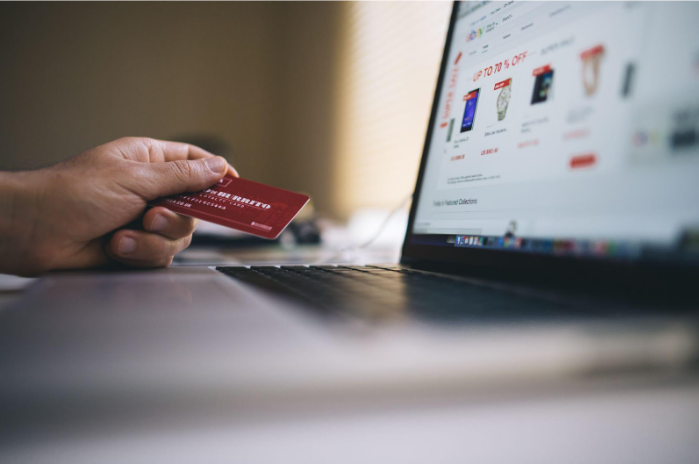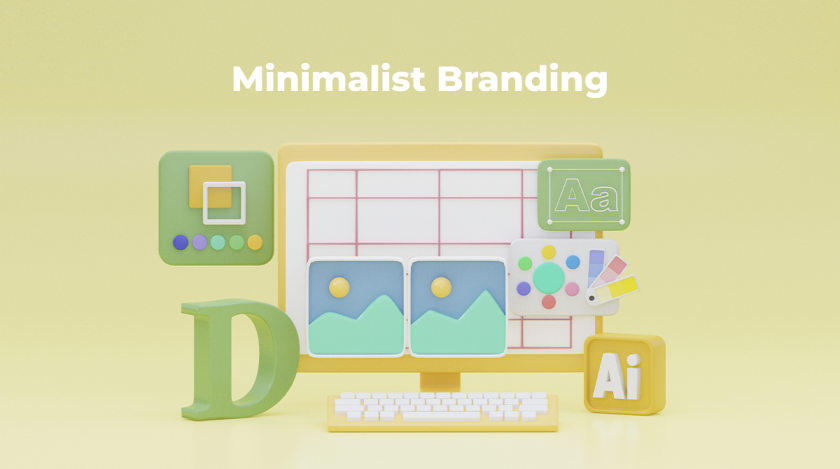In the fast-paced and competitive realm of eCommerce, businesses are constantly seeking innovative strategies to stand out and captivate their target audience surely. One such strategy that has gained significant recognition is minimalist branding. Embracing simplicity and clean aesthetics, minimalist branding holds the promise of unlocking the tremendous potential for eCommerce ventures. By focusing on essential elements and removing unnecessary clutter, this approach creates a compelling visual identity that resonates with consumers in a cluttered digital landscape.
In this article, we will delve into the various aspects of minimalist branding. Moreover, we will explore how it can reshape the eCommerce world, revolutionizing the way businesses connect with their customers and drive conversions.
The Essence of Minimalist Branding

Minimalist branding centers on the idea of ‘less is more.’ It emphasizes clean design, simplicity, and functionality. Rather than using intricate designs and excessive features, minimalist branding focuses on the essential elements. This design approach simplifies the brand identity to its core, thereby making it easier for consumers to understand and remember.
Minimalist Branding in eCommerce and User Experience
One of the significant benefits of minimalist branding in eCommerce lies in its potential to enhance the user experience (UX). Simplified, clean, and uncluttered design not only looks aesthetically pleasing but also makes navigation easier for customers.
Ease of navigation means that users can find what they need quickly without getting lost in a labyrinth of complicated designs and unnecessary features. As a result, customers are more likely to complete their transactions, reducing cart abandonment rates, and increasing conversions.
Creating a Strong, Memorable Brand Identity
Furthermore, in the eCommerce world, creating a strong and memorable brand identity is crucial for success. Minimalist branding, with its emphasis on simplicity and functionality, makes a brand more recognizable.
With fewer elements competing for attention, the main parts of the brand, such as the logo and name, become more prominent. Consequently, customers can quickly identify and remember a brand, which naturally leads to a higher likelihood of customer loyalty and repeat purchases.
Designing High-Quality, Personalized Logos
Developing a minimalist logo does not necessarily require a large budget or a team of professional designers. To create unique logos for eCommerce businesses, here are some cost-effective methods:
1. Online Logo Design Tools: The internet is awash with numerous free logo maker tools that provide user-friendly platforms for businesses to create their logos. These online tools come with pre-designed templates, customizable features, and an easy-to-use drag-and-drop interface, making them an excellent resource for businesses on a budget.
2. Freelance Graphic Designers: Hiring a freelance graphic designer can be a cost-effective way to get a unique, professional logo. Platforms such as Fiverr and Upwork provide a wide range of designers with different specializations and price points.
3. Design Contests: Websites like 99designs allow businesses to host a design contest where designers compete to create the best logo. Additionally, it gives businesses a variety of design options at a fixed price.
4. DIY Approach: If you have a flair for design, you can surely consider creating the logo yourself. Software like Adobe Illustrator or free alternatives like GIMP can help in this endeavor.
Personalizing Your Logo
The logo should reflect the brand’s personality and values, and resonate with the target audience. Here are some tips for personalizing your logo:
1. Understand Your Brand: Your brand’s personality should guide the design process. Is your brand modern or vintage? Luxurious or affordable? Fun or serious? Additionally, the answers to these questions will influence the colors, shapes, and typography you choose.
2. Know Your Audience: Understand who your customers are – their preferences, lifestyles, and needs. This knowledge will help ensure that your logo will appeal to them.
3. Select Meaningful Symbols: Any symbols or images used in the logo should have some relevance to your brand and what it represents. They should be simple yet meaningful.
4. Choose Appropriate Colors: Different colors can evoke different emotions. Choose colors that align with the feelings you want to evoke in your customers when they think about your brand.
With the right strategies and resources, even small eCommerce businesses can afford to create high-quality, personalized logos that contribute to a strong and memorable brand identity.
Minimalist Branding and the Mobile User
With the rise in mobile commerce, it has become increasingly crucial for brands to optimize their designs for mobile devices. Furthermore, minimalist branding aligns perfectly with this need.
Minimalist design is inherently more adaptable to different screen sizes and resolutions, making it an excellent choice for mobile optimization. The clean and uncluttered design ensures that the site looks good and functions well, regardless of the device used, providing a consistent user experience across all platforms.
Standing Out in the Crowd
In the competitive eCommerce landscape, standing out from the crowd can be a daunting task. However, minimalist branding can provide an edge.
Many eCommerce sites are overloaded with information, colors, and features, which can overwhelm the users. In contrast, a minimalist design can offer a refreshing change. The simplicity and clarity of minimalist branding can cut through the noise, making a brand stand out and attract the attention of potential customers.
Key Elements of Successful Minimalist Branding
Furthermore, a successful minimalist branding strategy is not just about stripping down the design to its bare bones. It’s about carefully selecting elements that reflect the brand’s identity and values, resonate with the target audience, and enhance usability. Some key elements include:
- Clear and concise messaging: Since there’s less space and fewer elements to work with, the brand’s message should be clear, concise, and compelling.
- Use of white space: White space is a fundamental part of minimalist design. It helps to create a sense of balance, direct focus, and improve readability.
- Functional simplicity: Moreover, each element should serve a specific purpose in the design. This approach avoids unnecessary complexity and enhances user experience.
The Advantage of Minimalist Branding
Moreover, minimalist branding holds tremendous potential for eCommerce businesses. It’s easier to stand out in a crowded digital marketplace when you simplify the design and focus on what’s essential.
However, achieving successful minimalist branding requires a deep understanding of the brand’s identity, the target audience, and the principles of minimalist design. It’s about making strategic choices, not just about doing less.















